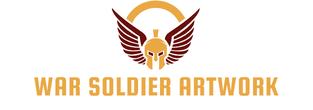How to Use Predictive Analytics to Prevent Inventory Shortages in UK Pharmacies?

Working in the pharmaceutical sector can be challenging, with many critical elements to consider. Among these, inventory management stands out as a prominent concern. Balancing supply with demand is an age-old challenge in any business, but when it comes to pharmacies, the stakes are high as it relates to people’s health.
In recent years, UK pharmacies have faced severe medicine shortages, leading to distress among patients and healthcare providers. Pharmacies are grappling to maintain an adequate supply of drugs, which is a matter of grave concern. However, there’s a silver lining to this challenge: predictive analytics. This article will delve into how UK pharmacies can leverage predictive analytics to prevent inventory shortages.
En parallèle : How Can UK-Based NGOs Effectively Use Mobile Apps for Grassroots Engagement?
Understanding the Current State of Drug Shortages
Before diving into the solution, it’s crucial to understand the magnitude of the problem. The drug shortage isn’t a new issue; it’s been plaguing the healthcare industry for years. A recent study highlighted that up to 82% of UK pharmacists are grappling with medicine shortages. This has led to a significant impact on patient care, with healthcare providers spending more time sourcing medicines than caring for patients.
Several factors contribute to drug shortages, including manufacturing issues, regulatory challenges, and fluctuations in demand. The unpredictability of these factors makes it incredibly challenging for pharmacists to anticipate and prepare for shortages.
Cela peut vous intéresser : What Are the Challenges for UK Cybersecurity Firms with the Rise of Quantum Computing?
The Role of Predictive Analytics in Pharmacy Inventory Management
Predictive analytics refers to using historical data to forecast future events. In the context of pharmacy inventory management, predictive analytics can help forecast demand for various drugs, enabling pharmacists to maintain an adequate supply.
Pharmacies can leverage predictive analytics to analyse historical sales data and understand consumption patterns. These patterns can help predict future demand for different medicines, allowing pharmacies to maintain sufficient inventory levels.
For example, if the data shows increased sales of flu medicines during certain months, pharmacies can stock up in advance to meet the anticipated demand. By using predictive analytics, pharmacies can move from reactive inventory management to a more proactive approach.
Integrating Predictive Analytics with Pharmacy Management Systems
To effectively leverage predictive analytics, it needs to be integrated with pharmacy management systems. These systems typically track sales data, which can be used to forecast demand. Google, a leader in technology, has developed advanced predictive analytics tools that can be integrated with various management systems.
By integrating predictive analytics with pharmacy management systems, pharmacies can automate the process of demand forecasting. This can significantly reduce the time spent on inventory management, allowing pharmacists to focus on patient care.
Training and Empowering Pharmacy Staff in Predictive Analytics
Merely integrating predictive analytics with pharmacy management systems isn’t sufficient. Pharmacies also need to invest in training their staff to understand and use predictive analytics effectively.
Pharmacy staff, particularly the ones involved in inventory management, need to understand how predictive analytics works and how to interpret the forecasts. They should be able to adjust inventory levels based on the predictions and use their judgement to make decisions in case of unusual circumstances.
Moreover, empowering pharmacy staff to use predictive analytics can help create a culture of data-driven decision making, leading to more efficient and effective operations.
The Future of Pharmacy Inventory Management: Predictive Analytics and Beyond
The use of predictive analytics in pharmacy inventory management is just the beginning. As technology evolves, pharmacies can leverage more advanced tools and techniques to prevent drug shortages.
Artificial intelligence (AI), for example, can take predictive analytics to the next level by analysing vast amounts of data and identifying patterns that humans might miss. Similarly, blockchain technology can help improve supply chain transparency, making it easier for pharmacies to track and manage drug supplies.
In conclusion, predictive analytics can play a pivotal role in preventing drug shortages in UK pharmacies. However, successful implementation requires understanding the technology, integrating it with existing systems, and training staff to use it effectively. With the right approach, pharmacies can transform the way they manage inventory, ensuring that patients always have access to the medicines they need.
Utilising Google Scholar and Crossref for Predictive Analytics
Google Scholar and Crossref are fundamental tools when it comes to integrating predictive analytics into your pharmacy management system. These platforms offer a wealth of data and research papers that can provide deep insights into medicine consumption patterns and trends.
Google Scholar, for instance, is a freely accessible web search engine that indexes the full text or metadata of scholarly literature across an array of publishing formats and disciplines. Pharmacies can use Google Scholar to find articles and studies related to medicine shortages, drug shortages, and even supply chain management.
Crossref, on the other hand, is a service that provides digital object identifier (DOI) links for scholarly content. It allows for the retrieval and cross-referencing of articles and citations. Using these tools, a pharmacy can gather valuable data on the consumption patterns of various drugs in the United Kingdom and beyond, including Saudi Arabia and the United States.
While Google Scholar and Crossref are not predictive analytics tools per se, they are valuable resources for data gathering. With the right information, pharmacies can make more accurate predictions about future demand, aiding their supply chain management and ultimately helping prevent drug shortages.
Addressing Current Challenges: COVID Pandemic and Drug Shortages
The current global scenario, marked by the COVID pandemic, has significantly impacted the pharmaceutical industry. The unprecedented demand for certain drugs, coupled with supply chain disruptions, has led to severe medicine shortages worldwide, including in the United Kingdom.
Respondents indicated in a recent survey that the COVID pandemic had increased the time spent on sourcing medicines, exacerbating existing challenges in patient care and hospital pharmacy operations. This has highlighted the urgent need for effective forecasting methods to manage inventory and prevent shortages.
Predictive analytics can serve as a potent tool in this context. By analysing historical sales data and consumption patterns, predictive analytics can provide an estimate of the likely demand for different drugs in upcoming months. This can enable pharmacies to plan their inventory in advance, reducing the risk of shortages.
Additionally, predictive analytics can help identify potential risks and bottlenecks in the supply chain, allowing pharmacies to take proactive remedial measures. For instance, if data indicates a likely disruption in the supply of a particular medicine, pharmacies can source alternatives or increase their stock of that medicine in advance.
Conclusion: Transforming Pharmacy Inventory Management
Predictive analytics has the potential to significantly transform inventory management in pharmacies. By leveraging historical sales data and analysing consumption patterns, pharmacies can forecast future demand for different drugs and plan their inventory accordingly.
However, implementing predictive analytics in pharmacies is not without challenges. It requires a thorough understanding of the technology and the ability to interpret and action the forecasts. Training the pharmacy staff, especially those involved in inventory management, is crucial to the successful adoption of predictive analytics.
Moreover, predictive analytics is just the beginning. The future holds the promise of more advanced technologies such as artificial intelligence and blockchain, which can further enhance supply chain transparency and risk assessment.
In conclusion, while the path to predictive analytics in pharmacy inventory management may be complex, the benefits are manifold. Once implemented effectively, it can ensure a steady supply of medicines, significantly improve patient care, and ultimately lead to a more efficient and proactive pharmacy operation. The future of pharmacy inventory management lies in leveraging technology to its fullest, and predictive analytics is a promising step in the right direction.
